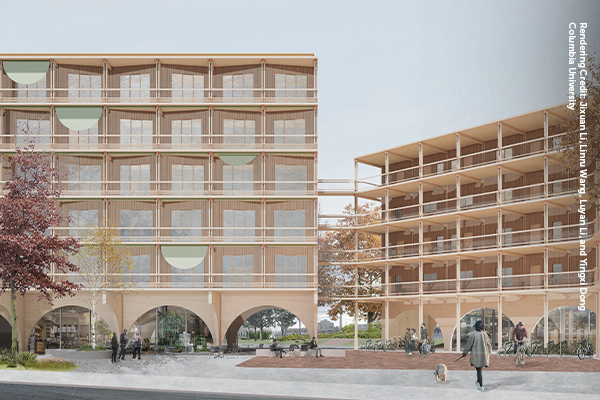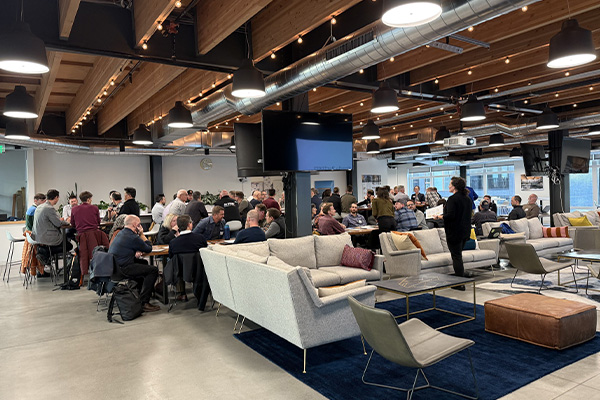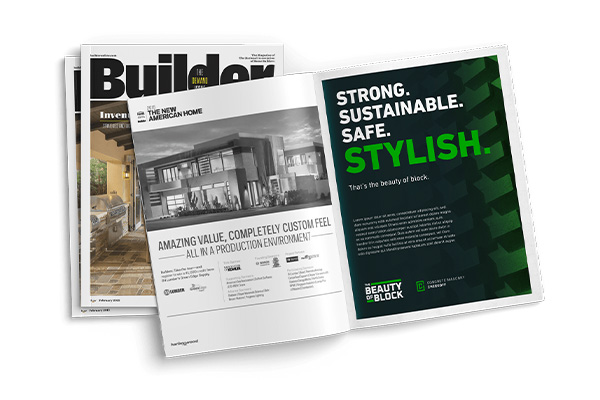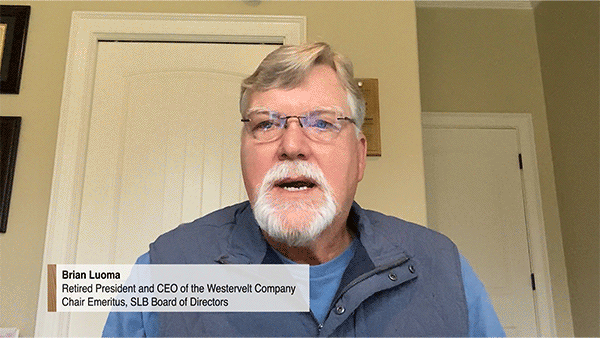HIGHLIGHTS
Program Updates
Think Wood Profile Demonstrates Light-Frame Construction’s Value in Affordable Projects

A recent profile of the JJ Carroll Redevelopment from MASS Design Group puts the spotlight on the advantages of light-frame construction in affordable housing, with the architecture firm highlighting its value and speed of construction benefits. The 180,000-square-foot senior housing project used five stories of light-frame construction over a concrete podium to provide 142 affordable units on the same site of an earlier community that had just 64 apartments.
This popular resource serves the dual function of promoting opportunities for wood construction while also delivering strong engagement for Think Wood, which had a record year in 2024 for new highly engaged design professional leads. These professionals are more likely to build with wood than their less-engaged peers, and 65% of them say they are more likely to specify wood systems after repeat engagement with Think Wood resources.
Affordable housing was a bright spot in the slow market for apartment starts in 2024, with traditional affordable units accounting for a higher percentage of starts, according to Multifamily Dive. Affordable housing represents a significant opportunity to increase demand for light-frame and mass timber construction, with estimates of the housing shortage ranging from 1.5 million units, according to the National Association of Home Builders, to 7.3 million homes, according to the National Low Income Housing Coalition. It’s also a highly relevant topic to the design industry, with Think Wood’s audience showing strong engagement with affordable housing content as well as indicating interest for it in audience surveys.
Student Design Competition Reimagines Cities with Mass Timber Solutions

Wood-focused design competitions continue to play a pivotal role in shaping the future of architecture and engineering education by inspiring students to explore innovative applications of wood and mass timber. SLB Education, which engages higher education audiences under the Think Wood brand, sponsored the 2024 CTBUH Mass Timber Student Design Competition showcasing the potential of mass timber as a sustainable, versatile building material while encouraging students to develop creative solutions to real-world challenges.
Hosted by the Council on Tall Buildings and Urban Habitat (CTBUH), the competition invited student teams from the United States and Canada to design a visionary high-rise using mass timber as the primary structural material. The competition’s theme, “Tall Timber for the Urban Future,” emphasized how timber can address urbanization, environmental challenges, and the need for high-performing, sustainable buildings.
The competition resonated strongly with architecture students, resulting in 68 submissions from 24 universities. A distinguished jury of architects and faculty from prestigious U.S. programs selected five winners, including Columbia University’s T-Line entry (pictured above), a 286-unit mass timber affordable housing development in the Bronx that combines a low-carbon footprint, energy efficiency, and eco-conscious community living.
These designs underscore the transformative potential of mass timber in urban settings and highlight the importance of integrating wood-focused curricula into architectural and engineering education. SLB Education is committed to expanding student engagement in mass timber design by supporting competitions that bridge academia with industry needs, offering a compelling alternative to ubiquitous concrete- and steel-focused programs.
AWC Releases Updates to Heights and Areas Calculator
The American Wood Council (AWC) released updates to the Heights and Areas Calculator, a free application that calculates the maximum allowable heights and areas for buildings for various types of construction and now includes mass timber construction types. The updates also include heights and areas measurements from the 2019 California Building Code, a feature designed specifically to meet the unique needs of the California market.
The app makes heights and areas calculation more accessible for design teams looking for ways to maximize the value of their buildings. It can be especially useful for designers dealing with mixed occupancies or looking to increase the size of their mid-rise projects.
The calculator is a joint project of the AWC, the International Code Council (ICC), and WoodWorks. The calculator, available online and as an app, allows users to input the proposed building height and area for any occupancy and then shows the allowable types of permitted construction based on the 2021 and earlier editions of the International Building Code (IBC). Determining the allowable heights and areas by hand is often time-consuming and tedious. The calculator helps lessen this issue by increasing access to code-compliant figures and encouraging safe design on an easy, straightforward platform.
In addition to releasing the calculator updates, the AWC and ICC also released the 2021 Code Conforming Wood Design (CCWD). This publication summarizes the most important provisions for wood and wood products in the 2021 IBC to further support access to and understanding of important codes and provisions for wood construction. Access the Heights and Areas Calculator for free online, or download the app from the Apple or Google Play stores.
WIN Roundtable Format Connects Developers with Wood Experts

A recent WoodWorks roundtable-style workshop tested a new format to engage architects, engineers, and construction (AEC) professionals and development communities in Portland, Oregon, creating small discussion groups modeled after an integrated project team. Each group included AEC members of the WoodWorks Innovation Network (WIN), developer/owner members of the Urban Land Institute (ULI), and WoodWorks partners who rotated among the tables. The ULI is an important partner because its membership includes the property development companies that are key decision makers in the choice to build with wood.
Led by WoodWorks’ Regional Director for Oregon, the event gave leaders in Portland’s design and construction community an opportunity to network with each other and wood manufacturers, while demonstrating the value of WIN to both AEC professionals and developers. The format of this event provides new value to WIN’s wood design experts by helping to make connections in the developer community while also showing value to firms that have yet to join WIN. Based on the success of this event, another roundtable workshop will be hosted by ULI Northwest later this year.
Spotlight
Concrete Masonry Checkoff Rolls Out Education, Marketing, Codes Programs

After its launch in 2023, the Concrete Masonry Checkoff (CMC), the first checkoff program established for a competing building material, is building out counterpart programs to the SLB’s funded programs, including a national marketing campaign, a design assistance network, a codes and standards program, and a centralized education hub. A recent CMC webinar series provides greater detail on the strategy and tactics these programs are using and the audiences they are targeting.
The CMC’s counterpart to Think Wood is the Beauty of Block marketing campaign that launched in August, and the CMC’s webinar details the marketing program’s focus on five pillars—strength, safety, sustainability, savings, and style—along with a campaign website and paid media with trade publications.
The equivalent to SLB Education is the CMC’s University Education and Research Program, which includes faculty workshops, development of masonry-focused coursework, and tools for producers to engage with local universities. On the professional education side, the CMC also funded a design summit featuring continuing education for architects focusing on innovations in masonry.
The CMC’s Codes and Standards Program is the competitive counterpart to the American Wood Council’s SLB-funded work on codes and standards. The program will have subject matter experts in five focus areas: structural analysis and design, fire and life safety, energy and environmental separation, material science, and environmental technologies. In addition to engagement in national codes and standards forums, the program will also target some state and local jurisdictions.
Industry Resources
FEA’s Housing Dashboard
FEA’s Housing Dashboard
This housing dashboard is provided compliments of Forest Economic Advisors (FEA).
View the January Housing Dashboard
Virginia Tech's Monthly Housing Report
This monthly housing commentary report is a free service of Virginia Tech and is intended to help one gauge future business activity in the U.S. housing market.
December 2024 Reports (released in February 2025)
Part A: December Housing Commentary
Part B: December Economic Conditions


